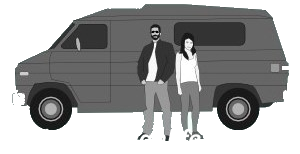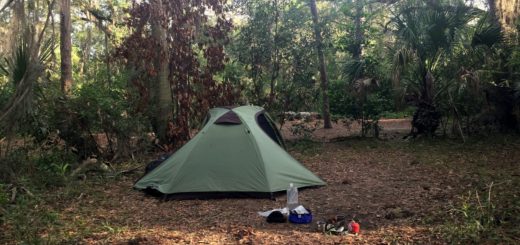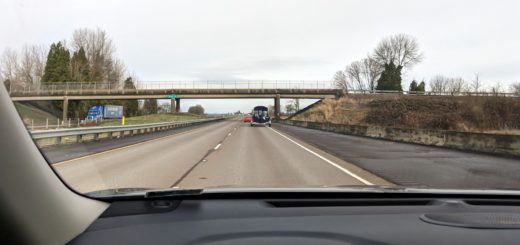Backpacking supplies – part 1
We had nothing at all when it came to backpacking supplies. Starting from scratch as we did, we had to buy pretty much everything, and we did so within two weeks of our first trip into the wild – backpacks, sleeping bags, sleeping pads, a tent, and even all the cooking gear and other nick-nacks. Neither of us wanted to break the bank buying all this gear, but after some great advice from the power couple, Seth & Drea, we decided that there were a few areas that we would not skimp… much…
Backpacks – Since we had to carry everything out on our backs, they needed to not only hold everything, but be comfortable in the process. We took the time to visit the local REI, who were super helpful in fitting us to the proper sized bags, both for our body types and how long we planned to backpack each time. With two-night excursions pretty much our max, the 60-70 liter packs were a perfect fit. I chose to have the ability to carry more if needed. The bags we chose were Gregory Mountain backpacks (Gregory Baltora 75 for him and, Gregory Deva 60 for her) not the most expensive, but more expensive then I was bargaining for.
These two items account for a quarter of the total cost of all the gear at $300 and $250 respectively. As luck would have it, they are cheaper on Amazon just two weeks after our purchases. Although I figured I would only spend $200 on a backpack, I am happy I went with the higher quality pack. Being uncomfortable while hiking would have made it all worthless. Before you buy any backpack, I recommend heading into your local REI (or other respectable outdoors store) and get properly fitted. Then you have the knowledge to shop around for the best pack within your budget.
Sleeping bags – Buying true “backpacking” sleeping bags will cost $300 or more, per bag. Buying cheap would cost us in sleepless and cold nights. We knew that we would not be backpacking in below-freezing temperatures, but had to accept that there may be occasions that it would dip below freezing when we are out. So, a 20 degree mummy-style bag was are bare minimum.
The Kelty Tuck bag was actually our first pick thanks to it’s price, but because of the unique foot-zipper, the bags would not zip together to form one large bag, which was very important too us.
The Northface Cat’s Meow fit the bill perfectly, although at a higher price. We made sure to buy a Men’s Long with a zipper on the left and a Women’s Long with a zipper on the right. This allowed us to zip them together to form one large bag. At a cost of $145 each (on sale at the time), the sleeping bags were our second largest single-item purchases.
Be aware, a men’s bag has less filling than a women’s (sexist bastards!) but packs away into a smaller compression sack and weighs nearly a pound less, which is significant when the men’s weighs under 3 pounds to begin with. The men’s packs into a sack smaller than a 1-gallon jug of water (weighing only 2lb 9oz) while the women’s packs slightly larger than a gallon jug and was deep into the 3lb range, both due to the extra filling. Apparently, this is pretty standard with sleeping bags – them packing women’s bags with more filling. One solution is to buy two men’s bags with opposite zippers if that extra pound is worth trimming.
Sleeping Pads – We really struggled with this purchase. A foam pad is the least expensive, weighs the least, but offers the least amount of insulation (about R-value 2), padding, and comfort, all while being the largest type of pad. We would have been forced to carry this pad outside our packs. Still, an inflatable pad can cost well over $100 each, weighs more, but can offer more insulation (R-4 and above) and they can be rolled up and compressed to fit inside the backpacks. Kerri, in her shopping-brilliance, came across the Term-a-Rest self-inflating mattresses for significantly less then in-store prices ($49 each when we bought them).
The Therm-a-Rest mattresses offered an insulation R-value of 4 (about mid-range) while only weighing in at 1 pound (not much more than a foam pad). Surprisingly, once inflated, they are extremely comfortable and worth the extra cost in my opinion. There are “short” versions to further reduce weight, and cost, at the expense of your legs extending off the mat, which would be fine in warmer months.
Tent – The tent, oh the tent. It was going to cost a ton of money, and we knew it. “Backpacking” tents are super light-weight but super-expensive because of it. “Camping” tents are inexpensive, but heavy in comparison. The biggest difference between them is the hardware with fiberglass poles weighing more than aluminum. We wanted a 3-4 person tent to allow the dogs to come inside if the weather turned bad on us, so we settled on a tent that was slightly larger, and heavier. In the end, thanks again to Kerri’s shopping around, we picked up the ALPS Mountaineering Zephyr 3 Person Tent from Sierra Trading Post for only $140.
At 7 pounds the Zephyr 3 is heavy for a backpacking tent, but one of the few 3 person tents available for backpacking. The Zephyr 2 (2 person) tent will weigh 1-2 pounds less, and the Zephyr 1 will weigh another 1-2 pounds less if you are going solo. There are certainly less expensive choices in tents that have a respectable weight. The Mountaintop Outdoor 2-3 Person Tent and Winterial 2-Person are both a fair bit less, and still in the 5lb range.
One item we both already had ahead of time – thanks to all the day-hikes we already do – was a comfortable pair of hiking boots from Merrell. Once again, being uncomfortable before you even get to setup your tent will make or break the entire experience. I have a lot of experience with the $30 cheapo brand boots, and now that Kerri has shown me the light I will never go back.
So, um, yea… for those keeping track of cost we are well over $1000 for two people with medium-grade gear, and these are only the basics. While our cost was $1078 for all these items, if you minus out the need to “house” two dogs the costs and weight can be reduced with a slightly smaller tent, but that total still comes out to over $1000. Further trimming down the cost of the sleeping bag and tent can easily slot you in under $1000 for a couple, and if you are going out solo then the costs can drop into the $500-600 range with all brand new equipment.
Obviously one could trim those costs a bit more by getting an off-brand backpack or shopping around at the REI garage sales or maybe even Craig’s List for some items. Actually the REI brand 75 liter backpack was $100 less than the Gregory and only slightly less comfortable, and I found air mattresses on Craig’s List a few days after our purchase for $20 each.  A lightweight lower-quality “backpacking” tent can be found at Big-5 Sporting Goods for under $50. I have used them in the past, and they work just fine… a few times anyway. In theory a solo-person cost could reduce the startup costs as low as $400-ish if you just wanted to get started today without seriously breaking the bank and can upgrade individual items later. My recommendation, don’t skimp on the backpack itself as you do not want to have to replace that anytime soon.
A lightweight lower-quality “backpacking” tent can be found at Big-5 Sporting Goods for under $50. I have used them in the past, and they work just fine… a few times anyway. In theory a solo-person cost could reduce the startup costs as low as $400-ish if you just wanted to get started today without seriously breaking the bank and can upgrade individual items later. My recommendation, don’t skimp on the backpack itself as you do not want to have to replace that anytime soon.
Tomorrow I will hit on the rest of the items we ended up buying to round out our backpacking supplies.





Glad you went to Sierra Trading Post. They have great deals there. I have been buying from them for years.
Well, credit goes to Kerri for that (you raised her well). I didn’t know the place existed before her.